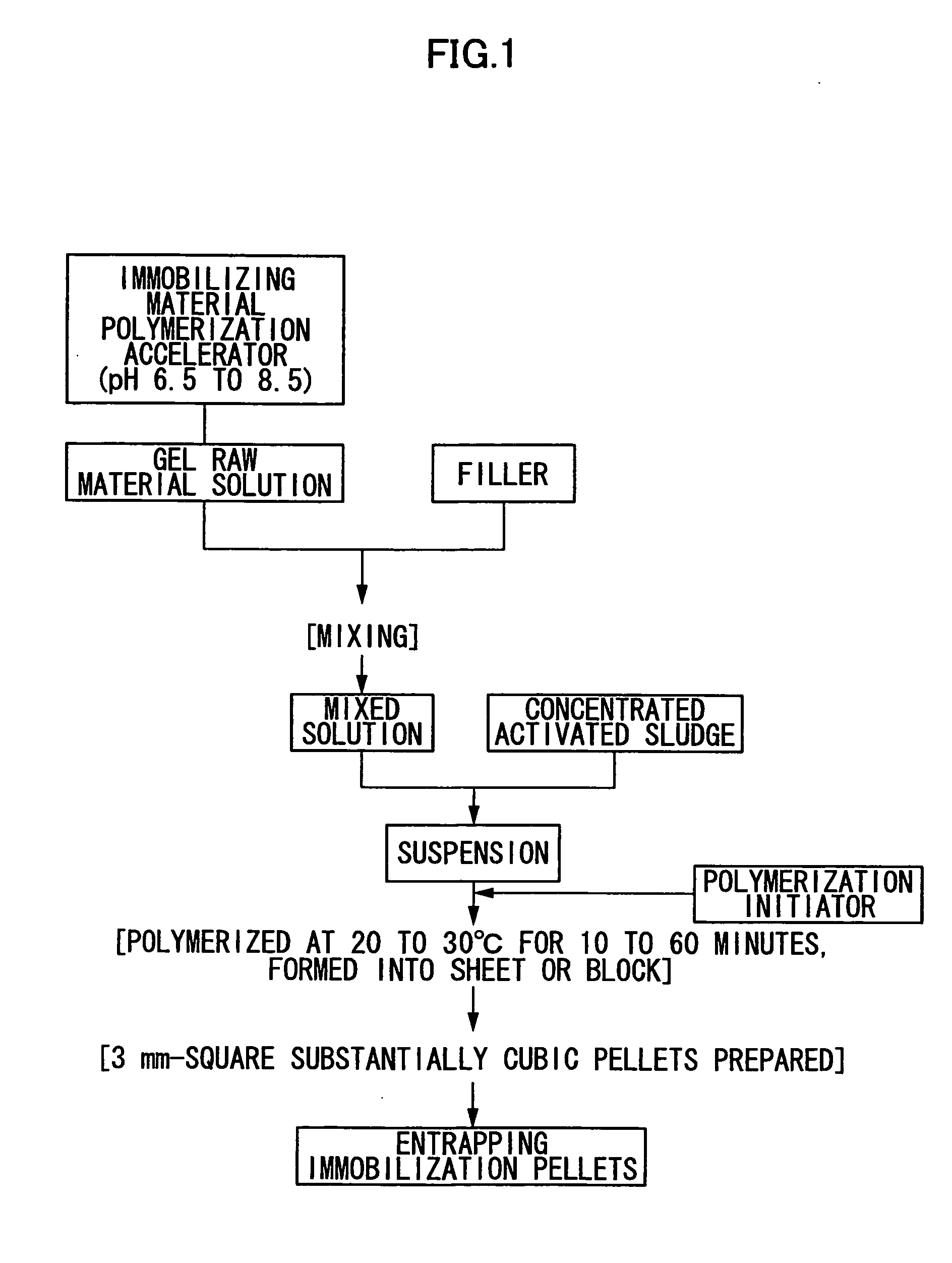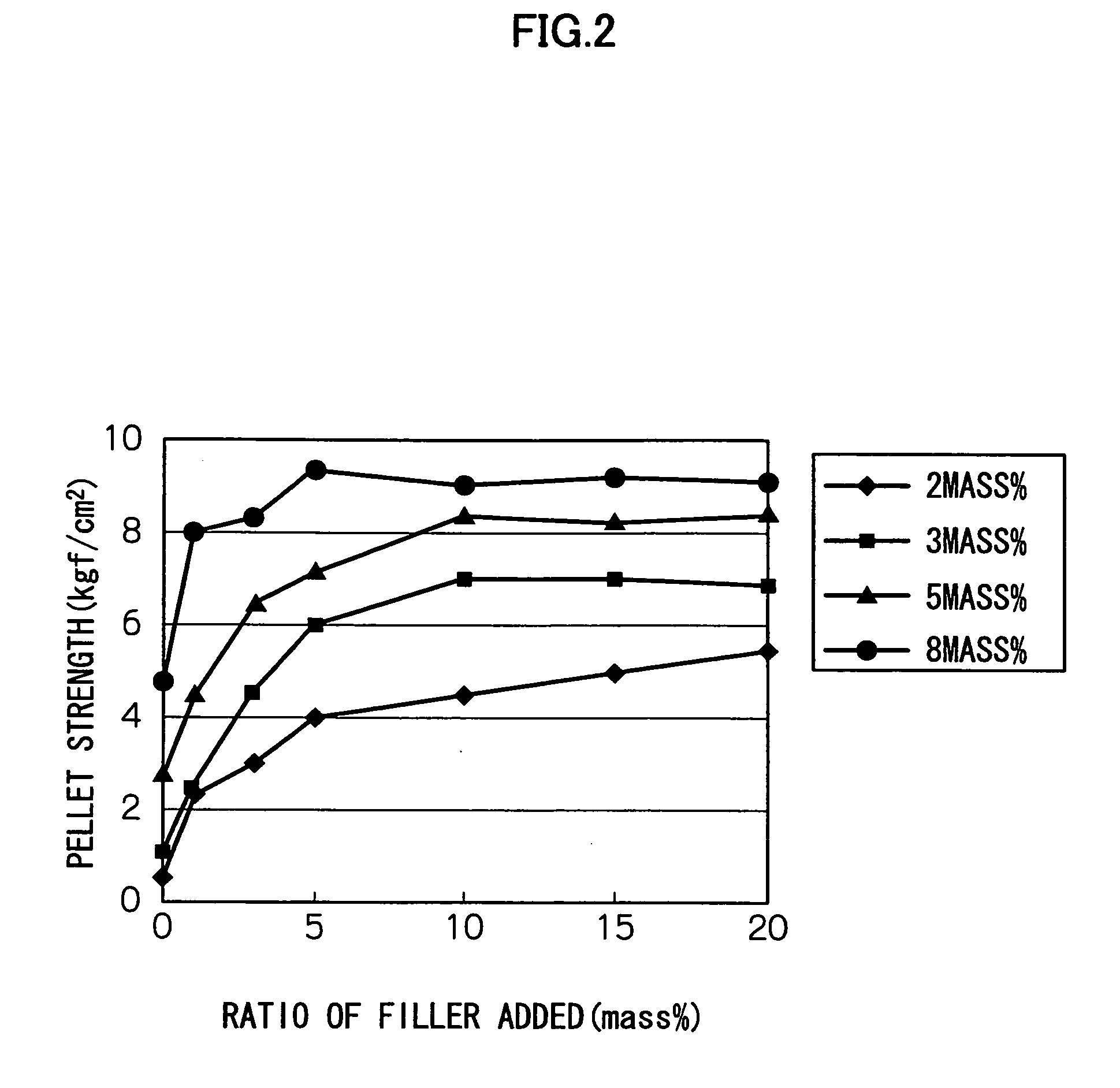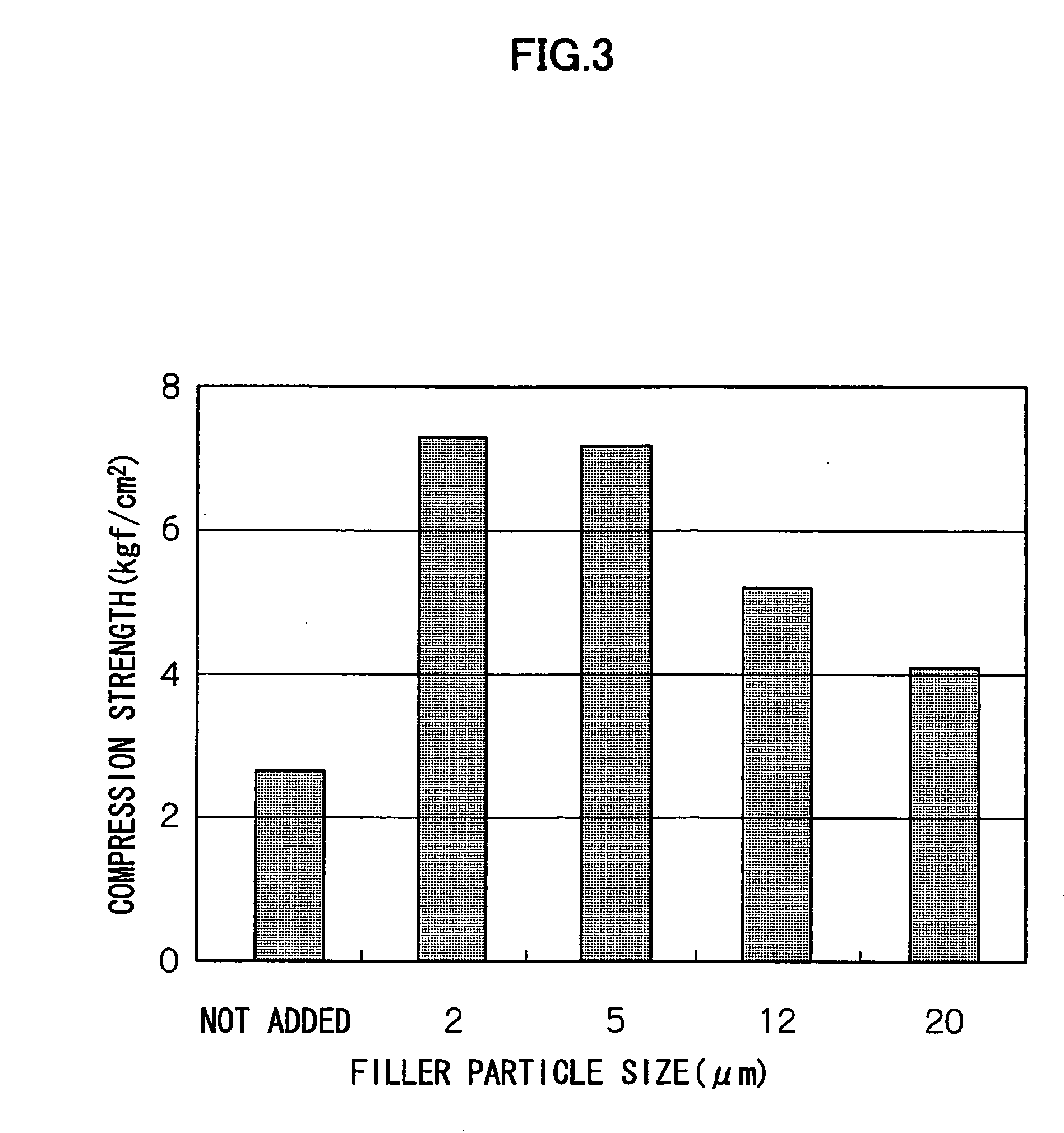Entrapping immobilization pellets and process for producing the same
a technology of immobilization pellets and pellets, which is applied in the direction of enzymology, microorganisms, biological water/sewage treatment, etc., can solve the problems of deteriorating water quality, affecting the production efficiency of pellets, and affecting the quality of water, so as to achieve high microbial activity, eliminate variation of pellet activity according to production lots, and high pellet strength
- Summary
- Abstract
- Description
- Claims
- Application Information
AI Technical Summary
Benefits of technology
Problems solved by technology
Method used
Image
Examples
example 1
Shape and Amount Added of Filler
[0055] Pellets produced in the same manner as above were examined for the relation between the shape of a filler added to an immobilizing material and the pellet strength. Table 2 shows results of measuring the relation between the shape of a filler added to 5 mass % of a polyethylene glycol prepolymer and the pellet strength. In the present embodiment, talc was used as a plate-like filler, and silica was used as a spherical filler.
TABLE 2[Unit: kgf / cm2]Ratioof filleraddedPlate-like fillerSpherical fillerFiller not added (Blank)1 mass %4.5 (44.1)3.1 (30.4)2.74 (26.9)3 mass %6.5 (63.7)3.5 (34.3)2.74 (26.9)5 mass %7.2 (70.6)4.5 (44.1)2.74 (26.9)10 mass % 8.4 (82.3)6.1 (59.8)2.74 (26.9)
Values within parentheses are based on unit N / cm2.
[0056] As shown in Table 2, it was confirmed that pellets with any amount of a filler added have pellet strength improved as compared with pellets with a filler not added. It was also found that pellets with an amount o...
example 2
Amount of Filler Added
[0057] Next, the relation between the amount of a plate-like filler added to various concentrations of an immobilizing material and the pellet strength was examined. FIG. 2 shows results of measuring the pellet strength in the case where 1, 3, 5, 10, 15, or 20 mass % of a plate-like filler (talc) was added to 2, 3, 5, or 8 mass % of a polyethylene glycol prepolymer.
[0058] As shown in FIG. 2, when a plate-like filler was added in an amount of less than 10 mass %, the pellet strength was drastically increased as the amount of the filler was increased, but when the filler was added in an amount of 10 mass % or more, no significant change was observed. It was also found that, as the concentration of the immobilizing material is lower, the amount of the plate-like filler added more significantly affects the pellet strength.
[0059] As the amount of the plate-like filler added is increased, the specific gravity of the pellets is increased, and thus it is difficult t...
example 3
Average Particle Size of Filler
[0060] Further, the relation between the average particle size of a plate-like filler added to an immobilizing material and the pellet strength was examined. FIG. 3 shows results of measuring the relation between the average particle size of a plate-like filler (talc) and the pellet strength when the plate-like filler (talc) was added to 5 mass % of a polyethylene glycol prepolymer.
[0061] As shown in FIG. 3, the pellet strength was highest when the plate-like filler had an average particle size of about 12 μm or less, and the pellet strength tended to be decreased when the filler had an average particle size more than 12 μm. It was also confirmed that the pellet strength in the case where the plate-like filler had an average particle size of about 20 μm was higher than in the case where the filler was not added. From this, it was found that the plate-like filler has an average particle size of preferably 12 μm or less, and more preferably 10 μm or le...
PUM
| Property | Measurement | Unit |
|---|---|---|
| particle size | aaaaa | aaaaa |
| particle size | aaaaa | aaaaa |
| temperature | aaaaa | aaaaa |
Abstract
Description
Claims
Application Information
 Login to View More
Login to View More - R&D
- Intellectual Property
- Life Sciences
- Materials
- Tech Scout
- Unparalleled Data Quality
- Higher Quality Content
- 60% Fewer Hallucinations
Browse by: Latest US Patents, China's latest patents, Technical Efficacy Thesaurus, Application Domain, Technology Topic, Popular Technical Reports.
© 2025 PatSnap. All rights reserved.Legal|Privacy policy|Modern Slavery Act Transparency Statement|Sitemap|About US| Contact US: help@patsnap.com



